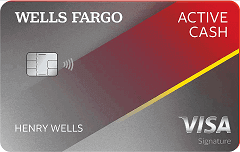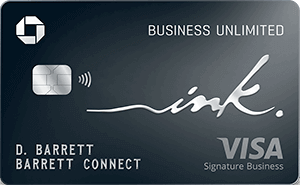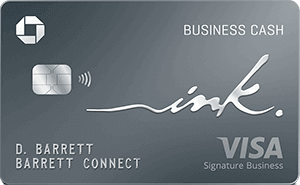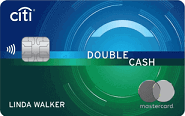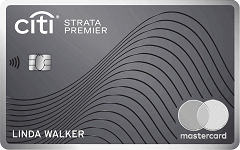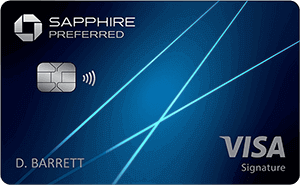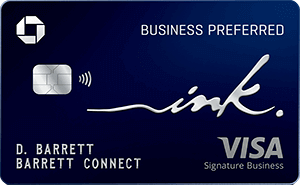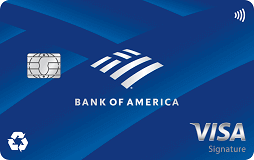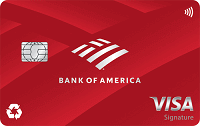 Credit card fine print and statements are filled with terms, numbers, and percentages that play a vital role in calculating rewards or credit card balance. Although most consumers use credit cards today, many of us do not understand the credit card terms and conditions. If you don’t understand the language, you may be frustrated. Here’s what these frequently used credit card terms and definitions mean:
Credit card fine print and statements are filled with terms, numbers, and percentages that play a vital role in calculating rewards or credit card balance. Although most consumers use credit cards today, many of us do not understand the credit card terms and conditions. If you don’t understand the language, you may be frustrated. Here’s what these frequently used credit card terms and definitions mean:
Address on file is the address that is recorded in your credit card account. It is the address that you provided on your application to open the credit card, unless you have provided a notice of a change of address in accordance with the terms disclosed on the back of your bill, in which case that new address is the address of record.
Annual fee is a fee charged once a year for maintaining an account and for any special services.
Annual percentage rate (APR) is the interest rate charged on credit card balances expressed in a standardized, annualized way. This rate is applied each month that an outstanding balance is present.
Lenders are required by law to disclose the APR. The rate is calculated in a standard way, taking the average compound interest rate over the term of the loan, so borrowers can compare loans.
APR stands for annual percentage rate, and it is the interest rate charged on credit card balances expressed in a standardized, annualized way. The APR is applied each month that an outstanding balance is present on a credit card.
Available Credit is the amount of unused credit available. Available credit is computed by subtracting the outstanding balance from your total credit line.
Average daily balance is the average balance for each day in the billing period, calculated by adding all daily balances together and dividing that total amount by the number of days in the billing period.
This is the method by which most credit cards calculate your payment due. An average daily balance is determined by adding each day’s balance and then dividing that total by the number of days in a billing cycle. The average daily balance is then multiplied by a card’s monthly periodic rate, which is calculated by dividing the annual percentage rate by 12. A card with an annual rate of 18 percent would have a monthly periodic rate of 1.5 percent. If that card had a $500 average daily balance it would yield a monthly finance charge of $7.50.
Balance is the amount you owe on your credit card. When a consumer does not pay the monthly amount owed in full, and carries a balance over a monthly billing period, the card issuer charges the consumer for the privilege of borrowing, in an amount set by the card’s interest rate.
Balance Transfer occurs when the outstanding balance of one credit card (or several credit cards) is moved to another credit card account. This is often done by consumers looking for a lower interest rate. Many credit card issuers offer introductory balance transfer APRs that are lower than the standard rates.
Balance transfer fee is a fee charged by a credit card company to transfer a balance from one account to another. This fee can be anywhere from 1 percent to 5 percent of the balance amount. The fee may or may not have a cap — in other words, a maximum amount. Caps on balance transfer fees used to be common, but have become less so in recent years. Contact the credit card issuer for their specific fees.
Billing Cycle is the number of days in the billing period. It includes the day after the previous close date through the current closing date of the account.
Cash advance is cash withdrawn from the available credit of your credit card account. There is no grace period for cash advances. Interest accrues daily and at a higher APR than on purchases or balance transfers until the complete balance is paid in full. Credit card cash advances have many disadvantages for consumers. Generally, you cannot take a cash advance for the full amount of your available credit. A transaction fee, which is a percentage of the cash advance, is usually charged.
Cash advance check works like a personal check except the amount is charged to your credit card account. This check can be written to your choice of recipients and for any amount up to your available credit limit. These types of checks are posted as cash advances and will incur a transaction finance charge.
Cash advance fee is a fee assessed on the date a new cash advance transaction is posted to an account. A charge by the bank for using credit cards to obtain cash. This fee can be stated in terms of a flat per-transaction fee or a percentage of the amount of the cash advance. For example, the fee may be expressed as follows: “2%/$10”. This means that the cash advance fee will be the greater of 2 percent of the cash advance amount or $10.
The banks may limit the amount that can be charged to a specific dollar amount. Depending on the bank issuing the card, the cash advance fee may be deducted directly from the cash advance at the time the money is received or it may be posted to your bill as of the day you received the advance. The cost of a cash advance is also higher because there generally is no grace period. Interest accrues from the moment the money is withdrawn.
Cash advance rate – When consumers take out cash advances, they are usually charged a higher rate. The cash advance rate is higher because these loans are viewed as riskier for banks. The interest rate is typically charged from the moment of the cash advance.
Credit is a promise to repay a debt for purchases you make. It allows you to buy something today and pay for it later.
Credit bureau is a credit-reporting agency that checks credit information and keeps files on people who apply for and use credit. The Credit Bureau produces a Credit Report, which is a record of a consumer’s level of indebtedness and bill paying behavior. The agencies compile the report and release it to lenders and others as permitted by law.
Credit limit also known as Credit Line, this is the maximum amount you can carry as the balance on your credit card. If you exceed this amount, an Over-the-Credit-Limit-Fee may be imposed.
Credit score also known as a credit rating. Many lenders use this numeric calculation of your credit report to obtain a fast, objective measure of your credit risk, and consider your score when deciding whether or not to approve a loan.
EMV stands for Europay, MasterCard and Visa. EMV is a global standard for credit cards equipped with computer chips and the technology used to authenticate chip-card transactions. EMV technology provides extra security when credit cards are used in chip card readers. An EMV Chip-enabled credit card, often called “chip and PIN”, “chip and signature” or “Chip-enabled smart card”, securely embeds a cardholder’s confidential data in the chip instead of the traditional magnetic stripe, thus making it more difficult for fraudsters to counterfeit cards.
Finance charge is the charge for using a credit card, comprised of interest costs and other fees, expressed in a dollar amount.
Finance charges are the amounts billed when one does not pay their monthly credit card balance in full. The size of a finance charge will vary depending on the amount charged and the interest rate.
Float is when a cardholder makes a purchase or obtains an advance, the transactions may not post for a few days. The charge amount is not added to the balance of the account until the transaction does post. The time between purchase and posting is referred to as the float.
Grace period is between the date of the credit card billing statement and the date payment in full must be received before interest begins to accrue on new purchases.
If the credit card user does not carry a balance, the grace period is the interest-free time a lender allows between the transaction date and the billing date. The standard grace period is usually between 20 and 30 days. If there is no grace period, finance charges will accrue the moment a purchase is made with the credit card. People who carry a balance on their credit cards have no grace period.
Interest Rate is the price that a bank or financial institution charges a customer for borrowing money. On credit cards, interest rates are a little trickier, because lenders set multiple interest rates. For example, you may have a low, teaser (introductory) rate when you open an account, followed by a higher standard rate for purchases, which turns into a penalty rate if you pay late. So you may end up owing a balance to a credit card company with multiple interest rates. Interest rates on credit cards are expressed in a standardized way so consumers can more easily compare cards. That standard way is known as the APR, which stands for annual percentage rate.
Introductory rates – Credit cards often offer lower introductory APRs as special promotional offers. After a period of time, the rate usually returns to the standard rate. It’s important to read the terms and conditions for all credit cards to fully understand how long the introductory rate will last and what the rate will be at the end of the introductory period.
It is the below-market interest rate offered to entice customers to switch credit cards or lenders.
Issuer – an issuer (or issuing member) is a financial institution which issues credit cards such as Visa® or MasterCard®.
Late payment fee may be imposed if the minimum monthly payment is not received by the Payment Due Date. In order to avoid late fees, ensure that you pay at least the minimum amount by the due date. Late payments may affect your credit history negatively, even if your entire outstanding balance is later paid in full. Occasional late fees are capped at $25 under federal regulations.
Monthly finance charge – If your credit card balance is not paid in full, you will be charged a Monthly Finance Charge. The charge is calculated on the statement closing date by multiplying the Average Daily Balance on the account by the Monthly Finance Charge rate (the Annual Percentage Rate divided by 12).
Minimum Monthly Payment is the minimum dollar amount that must be paid each month to prevent a credit card account from being delinquent. The amount is based on the percentage of your outstanding balance or a minimum fixed amount.
The industry standard is now to calculate the minimum payment in one of two ways: either 1 percent to 5 percent of the total balance due, or, all fees and interest due that month, plus 1 percent of the principal amount owed.
Minimum finance charge – You will be charged a minimum finance charge if the calculated amount of your finance charge is less than the minimum finance charge set by your credit card company for a billing cycle. For example, your finance charge may be calculated to be $0.35 but if the company’s minimum finance charge is $0.50, you’ll pay $0.50. A minimum finance charge applies only when you must pay a finance charge — that is, when you carry over a balance from one billing cycle to the next. Not to be confused with minimum payment.
Outstanding balance is the amount you owe on your credit card. This is the balance used to calculate payments and on which interest is charged.
Over the credit limit fee is the fee that may be imposed if your outstanding balance exceeds your credit limit on the card.
Payment due date is the date when your payment must reach your bank to avoid a late payment fee (if applicable).
Penalty rate – The penalty rate, also called the default rate, is the very high interest rate charged by the credit card issuer when a borrower violates the card’s terms and conditions. The penalty rate is triggered most often when cardholders are late making monthly payments. This penalty rate can be lowered or cancelled if the account holder makes six consecutive on time payments immediately following the late payment.
Periodic Rate is the interest rate described in relation to a specific amount of time. The monthly periodic rate, for example, is the cost of credit per month; the daily periodic rate is the cost of credit per day.
Personal identification numbers (PINs) are secret numbers that customers use to access their accounts via ATMs.
Preapproved means that a potential customer has passed a preliminary credit-information screening. A credit card company can spurn the customers it invited with “pre-approved” junk mail if it doesn’t like the applicant’s credit rating.
Prime rate – Most credit cards use the “prime rate” as a base rate (e.g., “prime + 12%”). The prime rate used is taken from the Money Rates column of The Wall Street Journal. The prime rate is merely a base rate used to make loans to certain borrowers.
Principal amount – The amount borrowed (such as the face value of a debt security), or the part of the amount borrowed which remains unpaid (excluding interest), here also called principal.
Purchase rate is the interest rate charged on regular purchases put on a credit card. It differs from a cash advance rate in that it is lower because banks and issuers view regular purchases as less risky.
Returned payment fee is charged by a credit card issuer if you pay your bill with a check that bounces.
Secured credit card is a credit card that requires you to pledge collateral to receive credit. Your credit line is determined by the amount you deposit into a collateral account. It is used by people new to credit, or people trying to rebuild their poor credit ratings.
Statement credit is a credit that appears on credit card account statement. Statement credit usually is a purchase refund or a way that banks give rewards to credit-card members. It offsets existing expenses on the credit-card statement.
teaser rate – is the same as introductory rate. It is an interest rate charged to a customer during the initial stages of a loan. The rate, which can be as low as 0%, is not permanent and after it expires a normal or higher than normal rate will apply.
Total finance charge is the amount that a consumer pays for credit card borrowing. The total finance charge is calculated in several ways, most commonly by multiplying the average daily balance by the daily periodic rate by the total number of days in the billing cycle. The charge is applied to credit card bills monthly.
Unsecured credit card is a credit card that is not secured with collateral. A customer can qualify for unsecured credit based on their credit history and financial strength.
Variable Interest Rate – With variable-rate cards, your APR (annual percentage rate) can change. Usually, the rate is tied to another rate called an index. Also known as a floating rate. In the United States, most credit cards have variable rates, and most of them are pegged to one such index, the prime rate. The prime rate, in turn, moves in lock step with an interest rate set by the Federal Reserve called the federal funds rate. So if you see a headline that says “Fed raises interest rates” it means your cost of carrying a balance on your credit card likely just went up. In your credit card terms and conditions document, the variable rate is often stated as an index plus a margin. For example, your document might say your rate is “Index + 10.99 percent.” If the prime rate is your index and is at 4 percent, your card’s interest rate is 14.99 percent.
